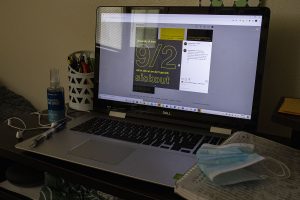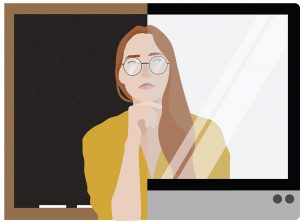University of Iowa professor to send metal alloys research to the International Space Station
Professor Christoph Beckermann will be working alongside a team at NASA to observe metal alloy grains as they are melted in a mirco-gravity furnace.
The Seamans Center is seen on Tuesday, Aug. 25, 2020. The engineering department recently was approved for a grant that allows the department to study the effects of off-campus learning on students.
September 2, 2020
A professor in the University of Iowa College of Engineering is working closely with NASA to study metals that will be sent to the International Space Station.
UI Foundation Distinguished Professor in Mechanical Engineering Christoph Beckermann is working with a team of researchers through NASA to study grain structures of metal alloys.
“Whenever you look at a piece of metal, it’s made up of little grains a millimeter or smaller,” he said. “Depending on the shape of these grains, the piece of metal will have different properties.”
He said at times researchers will want elongated “columnal” grains, while other times they may want rounded smaller “equiaxed” crystals. When liquid metal is solidified, the grain structure of the grains are formed.
Beckermann and his colleague, Rich Boling, wrote an article on the NASA website, discussing the molten stage that solidifies the columnar crystals, which are blocked from growing inward from the equiaxed crystals.
He said this process results in what they call a CET, or a columnar-to-equiaxed transition, in the grain structure of the now solidified metal. The research team is hoping to learn more about this CET in a controlled environment, he said.
The metals will be melted into a controlled furnace on the space station.
Ellen Radenberg, NASA’s project scientist for this experiment, works with Beckermann as an advocate for the science project’s development. At NASA, she works with the Metallurgy Branch that studies the structure of materials.
RELATED: NASA and Tippie form first official partnership for new grant
“Beckermann’s project with solidification will provide a fundamental understanding of the solidification processing, and it is important for both industrial applications as well as in space manufacturing and lunar explorations,” Radenberg said.
She added that, in space, manufacturing is important because often in space explorations, it is difficult for scientists to know what will be needed beforehand as it takes a long time to get there. Just because they are able to make things on Earth does not mean that they will be able to manufacture these things in a different environment, especially without gravity.
The project will allow NASA to know more about how to manufacture metals in space.
RELATED: NASA head talks space exploration at University of Iowa visit
UI Ph.D. student T.J. Williams said he has worked on this research for almost the entire duration of his doctorate.
“We arranged the samples in such a way that it will solidify in one direction from the bottom up [like it solidifies on earth],” Williams said. “In space, there is no top or bottom and that’s why we’re sending it into space. On Earth, it triggers the phenomenon we’re studying, but it may behave differently in the absence of gravity.”
According to the NASA article, their research will involve sending four samples of metal alloys to the space station.
“The idea is to resolidify this metal in the microgravity environment of the [space station],” Beckermann said. “That provides very controlled conditions that allow us to understand the phenomenon better that leads to the transition of the elongated grains to the round grains. You then can develop and validate computer simulation models that predict the grains during solidification, and then use it to improve metal casting processes on earth from anything from engine blocks to turbine blades to anything out of metal.”
He said the research will be done with a larger team also involving the European Space Agency and researchers in Europe. The team has already done some experiments on the space station to investigate this phenomenon.
Williams said he will continue to work alongside the professor on this research and design samples.
“He is a really smart guy that pushes you to be the best you can be,” the graduate student said. “We’ve been working on this for so long that sometimes I do forget that we’re gonna send something to space to do this experiment, but it’s pretty cool to get the data and then have the samples sent back here at some point.”






